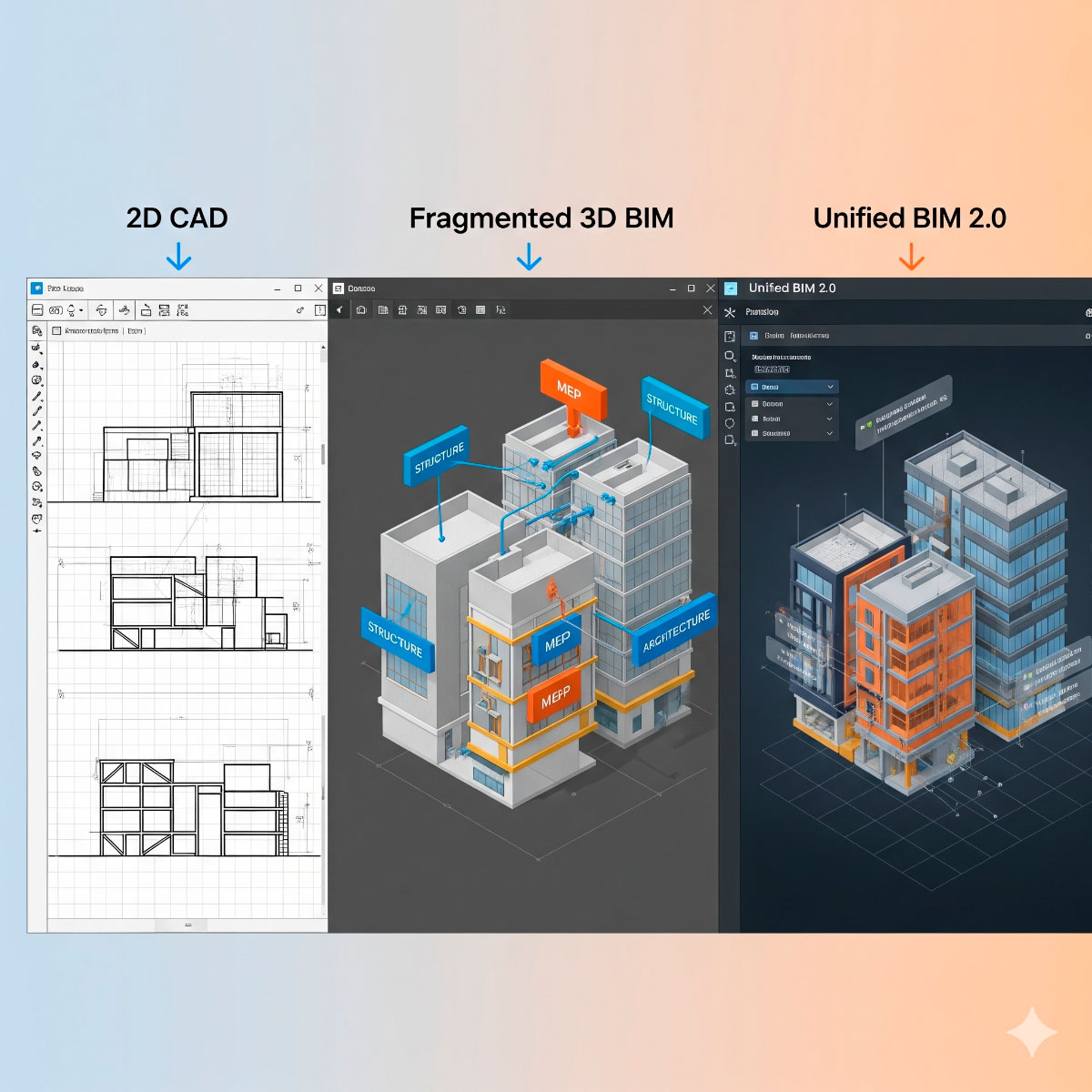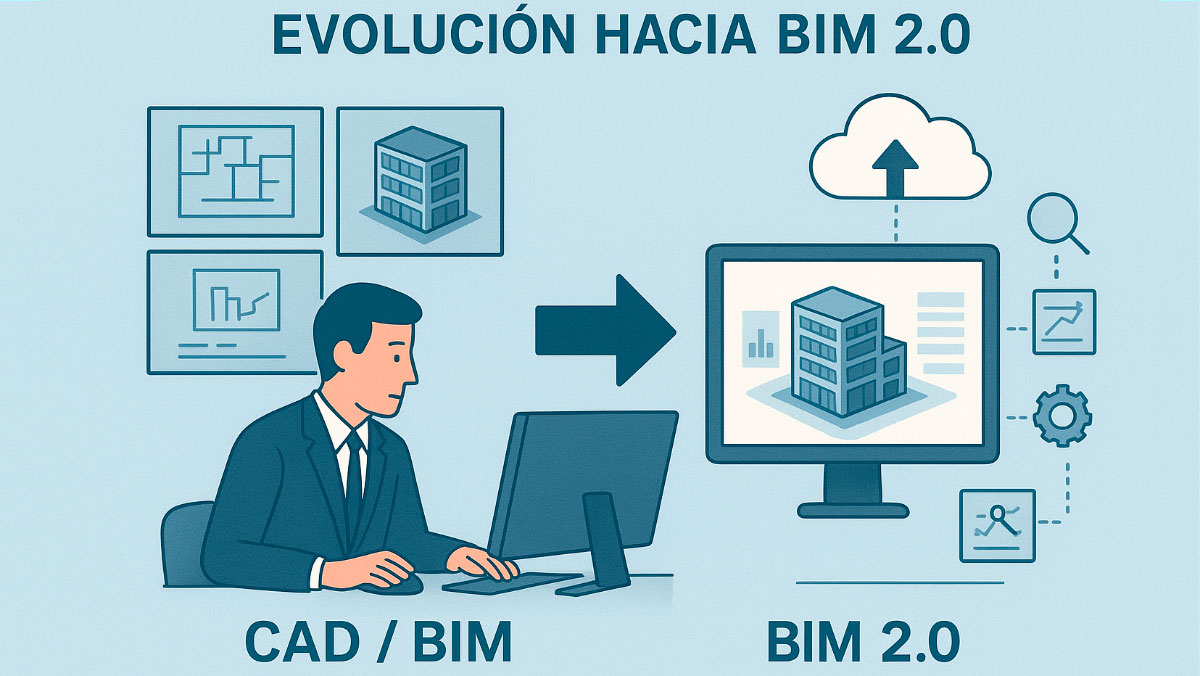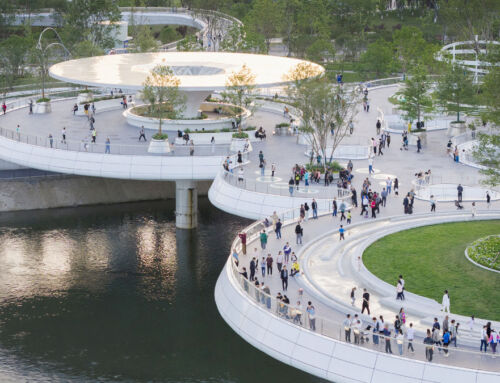Over the last two decades, architecture has undergone significant technological evolution. In the 2000s, architects moved from 2D design using CAD (Computer-Aided Design) tools to BIM (Building Information Modelling) methodology. In other words, architects moved from drawing with individual lines to complete 3D modelling of buildings. Based on this modelling, computer programs now automatically generate building plans, sections and elevations.
Despite these great advances, BIM software is currently showing signs of stagnation. This situation has caused enough frustration in the sector that some companies have published open letters demanding more progress and greater value from developers. These demands have led to the creation of a new generation of software, grouped under the name BIM 2.0.

But why do we need BIM 2.0?
The answer is clear: because modern architecture faces two main challenges with the tools currently at its disposal:
-Poor innovation and high costs: the lack of significant advances in programming means that tools lag behind the needs of architects. On the other hand, the constant increase in licence prices is driving the architecture community to seek more affordable alternatives.
-Workflow fragmentation: architects often have to use multiple specialised computer programmes to complete a single project. In contrast, other sectors, such as industrial design, have an integrated platform that optimises the process from design to production. One of the objectives of BIM 2.0 is precisely to offer a unified platform that avoids fragmentation.
To learn more, stay tuned as we will return to discuss the prospects opened up by the evolution towards BIM 2.0.
By Raúl Soriano, senior modeller in the Architecture Department at Amusement Logic






